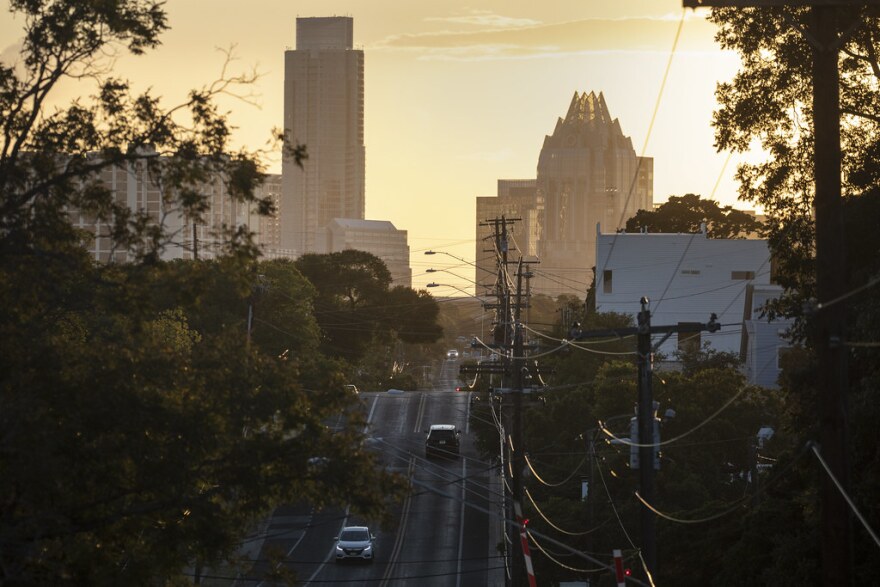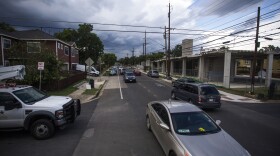The Census Bureau released the latest batch of data from its American Communities Survey last week. The survey offers a glimpse into economic indicators, demographic shifts and population numbers.
It's a lot.
Here are a few items that stood out.
The rate of children without health insurance in Austin and Texas increased – again.
Census Bureau numbers show, for the second year in a row, the state’s rate of uninsured people under 19 ticked up – from 10.7% in 2017 to 11.2% in 2018.
The total number of uninsured children and teens in Texas increased by more than 38,000, to 872,794 in 2018. In Austin, that rate stayed the same at 7.6%, though roughly 300 more young adults and children were insured in Austin last year compared to 2017.
By far, Texas had the highest uninsured rate in the U.S. among young people. The state also has maintained the highest number and rate of uninsured overall.
Advocates in Texas say the state’s rate of uninsured children has been growing largely due to declined enrollment in Medicaid and the Children’s Health Insurance Program, also known as CHIP.
According to a statement from Texans Care for Children last week, enrollment in Texas Children’s Medicaid/CHIP has declined since 2017, dropping from 3,404,621 in December 2017 to 3,176,182 in June 2019. That's a 7% decrease, according to the group's analysis of Texas Health and Human Services Commission data.
Experts say the drop in rates can be attributed to immigrant families withdrawing from public programs because of the Trump administration’s crackdown on both illegal and legal immigration – as well as a lack of funding for outreach for these programs and red tape over a child’s eligibility for the Texas Medicaid program, specifically.
Austin's renters (still) outnumber its homeowners.
Fifty-five percent of Austinites rent, according to American Community Survey data, compared to the 45% of homeowners. That's nothing new, really. Renters have outnumbered owners in Austin for the better part of a decade.
What is noteworthy is how much Austinites (continue) to overspend on rent. National guidelines suggest paying no more than a third of your income on rent. In Austin, 49% of renters spend 30% or more of their household income on rent – and 65.7% of those people are in units with rents of $1,500 or less a month.
Statewide that share of people paying $1,500 or less in monthly rent is considerably higher at 81%. The statewide makeup of renters and owners is nearly flipped – 61% of homes are owner-occupied, compared to 38% renters – and half of those renters are considered cost-burdened, spending 30% or more of their income on rent.
White Austinites earn nearly double the median income of Latinx and Black Austinites.
Median income in Austin is about $10,000 above the statewide median income at $71,543. That's roughly where it was last year, but Lila Valencia, a senior demographer for the Texas Demographic Center, says when examined across race and ethnicity, the new numbers show a disparity.
"It's definitely a disparity that we see in the median incomes," Valencia said, "and a lot of the factors are going to play into that."
Because people with lower incomes are more likely to be in poverty and not have health insurance, she said, "any sort of medical costs that they're bearing they're bearing alone."
The uninsured rate among white Austinites – who make up roughly 48% of the population – is 7%, while the rate is nearly a quarter for Latinx Austinites – who make up a third of the population.
White Austinites made exceedingly more in median income than their Latinx and black counterparts in 2018, while Asian American Austinites earned substantially more than their white counterparts:
- Median income for white households was $88,940
- Median incomes for Hispanic or Latinx households was $51,887
- Median income for African American households was $46,951
- Median income for Asian American households was $105,435
- Median income for Native American households was $43,597
Austin's still struggling with equal pay.
Women comprise 60% of the workforce nationally, but still earn less than their male counterparts.
Austin's workforce is 54% men and 45% women. While its composition isn't in line with the U.S. as a whole, its earnings gap is. Men in Austin earned $45,605 compared to the $38,215 in median earnings by women in 2018. Nationally, women saw $30,048 in median earnings in 2018, while men saw $41,119 in wages.
Texas' pay gap is wider than in Austin or the U.S., however: Men saw $40,000 in median earnings in 2018, compared to the $27,000 for women.
Men earned $45,605 compared to the $38,215 in median earnings by women in 2018. Nationally, women saw $30,048 in median earnings in 2018, while men saw $34,291 in wages.
However, Texas' pay gap is well above those of Austin and the U.S.: Men saw $40,000 in median earnings in 2018, compared to the $27,000 by women.
Ashley Lopez contribued to this report.



